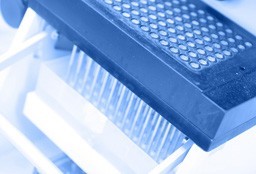In the Zone: automation

Automating sample preparation for complex assays pays dividends to scientists and project management, as liquid handlers can streamline workflows and provide audit trails documenting every step of the extraction. As nearly all liquid handlers on the market use air displacement pipetting, it is crucial to optimize liquid class parameters. The use of automation along each step of the process for in vitro screening is critical to maximizing both efficiency and reproducibility in results. The industry can likely expect further demands for speed and turnaround times to drive faster decisions for compound progression as new automation technologies come to market. A trend towards smaller sample volumes will play a role. Technologies that enable one to deliver nanoliter instead of microliter sample volumes will also improve turnaround time as well as reduce waste of reagents.
INFOGRAPHICS
Infographic: automation of sample preparation – In this infographic we review why automation is important as well as focusing on liquid detection and how to handle errors. The details of liquid handlers are also explored including Hamilton instruments.
Infographic: automation within an ADME laboratory – This infographic focuses on compound management and storage as well as high-throughput in vitro screening. The use of automation along each step of the process for in vitro screening is critical to maximizing both efficiency and reproducibility.
PODCASTS
Taking an assay from bench to an automated platform: a podcast with Jason Evans – In this podcast interview, Jason Evans (Scientist at Q² Solutions; NY, USA) discusses the importance of automation and key advantages of taking an assay from the bench to an automated platform. He also explains the increase in throughput when his lab transitioned to automated assays and the hurdles he faced when automating assays.
Automation of ADME: a podcast with Prakash Bhosale – In this podcast, Prakash Bhosale (Director of Discovery ADME at Q2 Solutions; IN, USA) discusses high-throughput in vitro screening and how to understand structure-activity relationships against ADME properties.
RESOURCES
![]()
Automation in the bioanalytical laboratory: what is the future?
Recent development in software and automation tools for high-throughput discovery bioanalysis
Automation in Chinese bioanalytical CROs for sustained competitiveness and growth


